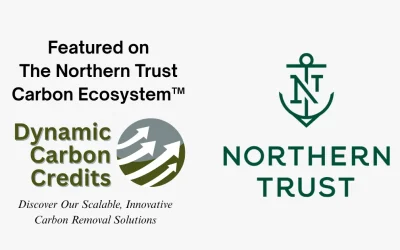Why it is an important question, is carbon offsetting greenwashing. In recent years, the term “carbon offsetting” has woven itself into the fabric of corporate sustainability practices, emerging as a beacon for companies aiming to neutralize their carbon footprint. Greenwashing, a practice where companies exaggerate or fabricate their environmental efforts, has become a critical concern as consumers increasingly seek authenticity in sustainability claims. As the world grapples with the urgent need to address climate change, carbon offsetting presents itself as a seemingly straightforward solution: invest in environmental projects to balance out your own carbon emissions. However, this approach has sparked a heated debate, leading us to question: Is carbon offsetting a genuine stride towards sustainability, or is it merely a form of greenwashing?
Understanding the question: Is Carbon Offsetting Greenwashing?
Carbon offsetting emerges as a pivotal strategy in the climate action arena, offering a method for industries and individuals alike to counterbalance their carbon footprint by investing in carbon dioxide saving projects. One of the most innovative and promising approaches embraced by initiatives like Dynamic Carbon Credit involves leveraging plant-based solutions and biochar to sequester carbon. This nuanced approach goes beyond traditional tree planting, diving into the heart of agricultural innovation and soil enhancement to combat climate change.
Plant-Based Solutions
At the core of plant-based carbon sequestration is the utilization of specific crops and vegetation that are highly efficient at capturing CO2 from the atmosphere. Unlike conventional reforestation efforts, these plant-based strategies can be integrated into existing agricultural practices, enhancing not only the carbon capturing capabilities of farmlands but also improving soil health and agricultural productivity. Crops such as switchgrass, miscanthus, and certain strains of algae have shown promising potential in this regard. They grow rapidly, require minimal inputs, and most importantly, absorb significant amounts of CO2 during their growth cycle.
Biochar as a Carbon Sequestration Tool
Biochar stands out as a particularly innovative component of this strategy. It is produced through the process of pyrolysis, where organic material is heated at high temperatures in the absence of oxygen. This process transforms the biomass into biochar, a stable form of carbon that can persist in the soil for centuries, effectively locking away CO2 that would otherwise contribute to atmospheric greenhouse gas levels.
Incorporating biochar into soil not only sequesters carbon but also offers myriad agricultural benefits. It improves soil health by increasing water retention, enhancing nutrient availability, and reducing the need for chemical fertilizers. Furthermore, biochar has the potential to rejuvenate degraded soils, making barren lands productive once again and providing a sustainable solution for food production in the face of a growing global population.
The Win-Win Scenario
The integration of plant-based solutions and biochar into carbon offsetting initiatives presents a compelling win-win scenario. For companies, this approach offers a tangible, innovative method to mitigate their environmental impact, aligning with corporate sustainability goals and consumer expectations for responsible business practices. It provides an avenue to invest in projects that not only capture carbon but also support sustainable development, soil regeneration, and food security.
For the environment, the benefits are profound. By transforming agricultural practices and soil management strategies, this approach addresses the dual challenges of climate change and land degradation. It enhances the resilience of ecosystems and agricultural systems against the impacts of climate change, promoting biodiversity and safeguarding natural resources for future generations.
The Argument for Carbon Offsetting
Proponents argue that carbon offsetting plays a crucial role in the broader spectrum of climate action strategies. It provides a pragmatic solution for emissions that are currently hard to eliminate due to technological and economic constraints. By investing in carbon offset projects, companies can immediately contribute to environmental conservation efforts, renewable energy adoption, and the transition towards a low-carbon economy. Moreover, carbon offsetting can raise awareness and fund projects that might otherwise struggle to find financial support.
The Greenwashing Debate: Is Carbon Offsetting Greenwashing?
The discourse around carbon offsetting and its potential for greenwashing is gaining traction as more companies and individuals aim to showcase their commitment to sustainability. Critics argue that the current landscape of carbon offsetting is ripe for exploitation by entities more interested in the appearance of environmental stewardship than in making substantive changes to their carbon footprint. This concern is underpinned by several critical issues that contribute to the perception of carbon offsetting as a tool for greenwashing.
Lack of Transparency and Accountability
One of the fundamental challenges in the carbon offset market is the significant variance in the quality and effectiveness of offset projects. The absence of universally accepted standards and a robust, transparent verification process makes it difficult for stakeholders to assess the true environmental impact of these projects. This opacity allows companies to tout their investment in offsets as evidence of their environmental commitment, even when the actual ecological benefits of these projects are nebulous or overstated. For carbon offsetting to gain credibility, there is an urgent need for more stringent, transparent, and accessible verification processes that can verify claims and ensure projects deliver on their environmental promises. The US Federal Trade Commission offers this guide to going green.
Deferring Real Change
Another critical critique of carbon offsetting is that it can serve as a distraction from the essential work of reducing emissions at the source. By purchasing offsets, companies may feel they have fulfilled their environmental obligations, allowing them to defer or ignore the more challenging task of reevaluating and transforming their operations to be inherently less carbon-intensive. This approach risks entrenching business-as-usual practices that are incompatible with the urgent need for global emission reductions. Critics argue that true sustainability requires direct action to cut emissions, rather than relying on offsets as a form of environmental absolution.
Questionable Longevity and Impact
The effectiveness and permanence of carbon offset projects, especially those focused on ecological restoration or conservation, have come under scrutiny. Projects based on reforestation or similar methodologies must contend with the realities of climate change, land use change, and other environmental threats that could diminish their carbon sequestration potential over time. There are concerns about whether these projects can guarantee the long-term storage of carbon they purport to sequester. In cases where the integrity of these projects is compromised—be it through natural disasters, changes in land use policy, or mismanagement—the supposed climate benefits may be significantly reduced or even completely negated.
The Bigger Picture
These critiques highlight the complexities and challenges of relying on carbon offsetting as a primary strategy for achieving carbon neutrality. While offsets can play a role in a comprehensive climate strategy, their potential for misuse as a greenwashing tool underscores the need for greater scrutiny, regulation, and transparency in the offset market. Only through addressing these issues can carbon offsetting contribute meaningfully to global efforts to mitigate climate change without offering false assurances or undermining the imperative for direct emission reductions.
Navigating the Shades of Green
Given the multifaceted concerns surrounding carbon offsetting, it becomes evident that this approach cannot be universally applied as a catch-all remedy for carbon emissions. The real value and credibility of carbon offsetting hinge on how these projects are implemented and managed over time. To elevate carbon offsetting beyond the realm of greenwashing and into a respected and valued component of the global climate action portfolio, several critical principles must be rigorously applied:
Transparency and Verification of Carbon Offsets
The foundation of a trustworthy carbon offset program lies in its commitment to transparency and the rigorous verification of its projects. Every project should undergo thorough scrutiny and assessment by reputable third-party organizations, ensuring that all claims of carbon sequestration or emission reductions are not only verifiable but also genuinely contribute to mitigating climate change. This process should include regular reporting and public disclosure of project results, methodologies used, and the specific impacts on the environment. Such transparency not only builds confidence in the offsetting initiative but also holds companies accountable for their environmental commitments.
Complementing, Not Replacing, Emission Reductions
Carbon offsetting must not be viewed as an alternative to reducing emissions directly at the source. Instead, it should serve as a supplementary measure within a comprehensive and ambitious climate strategy. This strategy should prioritize actionable steps towards reducing greenhouse gas emissions inherent to business operations, product life cycles, and organizational practices. Offsetting can then be used to address residual emissions that are currently infeasible to eliminate, ensuring that efforts to combat climate change are holistic and all-encompassing.
Investing in High-Quality, Sustainable Projects
The integrity of carbon offsetting also relies on the selection and support of projects that are not just sustainable but offer tangible, long-term benefits to the climate and communities involved. This means prioritizing initiatives that go beyond simple carbon capture, encompassing broader environmental restoration, biodiversity conservation, and socio-economic development goals. Projects should be chosen based on their potential to provide measurable and lasting environmental benefits, such as restoring ecosystems, improving air and water quality, and enhancing community resilience to climate impacts. By investing in projects with clear, beneficial outcomes, companies can ensure that their contributions to carbon offsetting have a meaningful and positive impact on the planet and its inhabitants.
The Verdict
Is carbon offsetting greenwashing? The answer hinges on the approach and the depth of commitment to authentic environmental change. Within the framework of a robust sustainability strategy that emphasizes real emission reductions and channels investments into transparent, impactful projects, carbon offsetting transforms into a vital tool in our collective battle against climate change.
In this complex terrain, the importance of selecting the right partner for your carbon offsetting journey cannot be overstated. Dynamic’s innovative solutions offer a path forward that is both credible and effective. By leveraging our plant-based sequestration methods and biochar technology, we not only ensure the integrity of your carbon offsetting efforts but also amplify their impact. We invite companies, policymakers, and forward-thinking individuals to join us in turning the tide on climate change.
Take the first step towards a truly sustainable and equitable future by scheduling a free consultation with Dynamic today. Discover how our tailored carbon offset solutions can integrate seamlessly into your sustainability strategy, helping you to not just meet but exceed your environmental goals. Together, let’s redefine what it means to be genuinely committed to the planet’s future.





